#EN1.3 Emotional accelerators

Images between priming and activation levels.
In 1996 psychologists John A. Bargh, Mark Chen, and Lara Burrows organized an experiment with a group of students at New York University. The task, disguised as a language proficiency assessment test, consisted of constructing four-word sentences from randomly mixed groups of five terms as quickly as possible. A kind of “find the intruder” game. Some participants had to discard words with a neutral meaning. At the same time, the experimental group received terms related to elderly stereotypes.
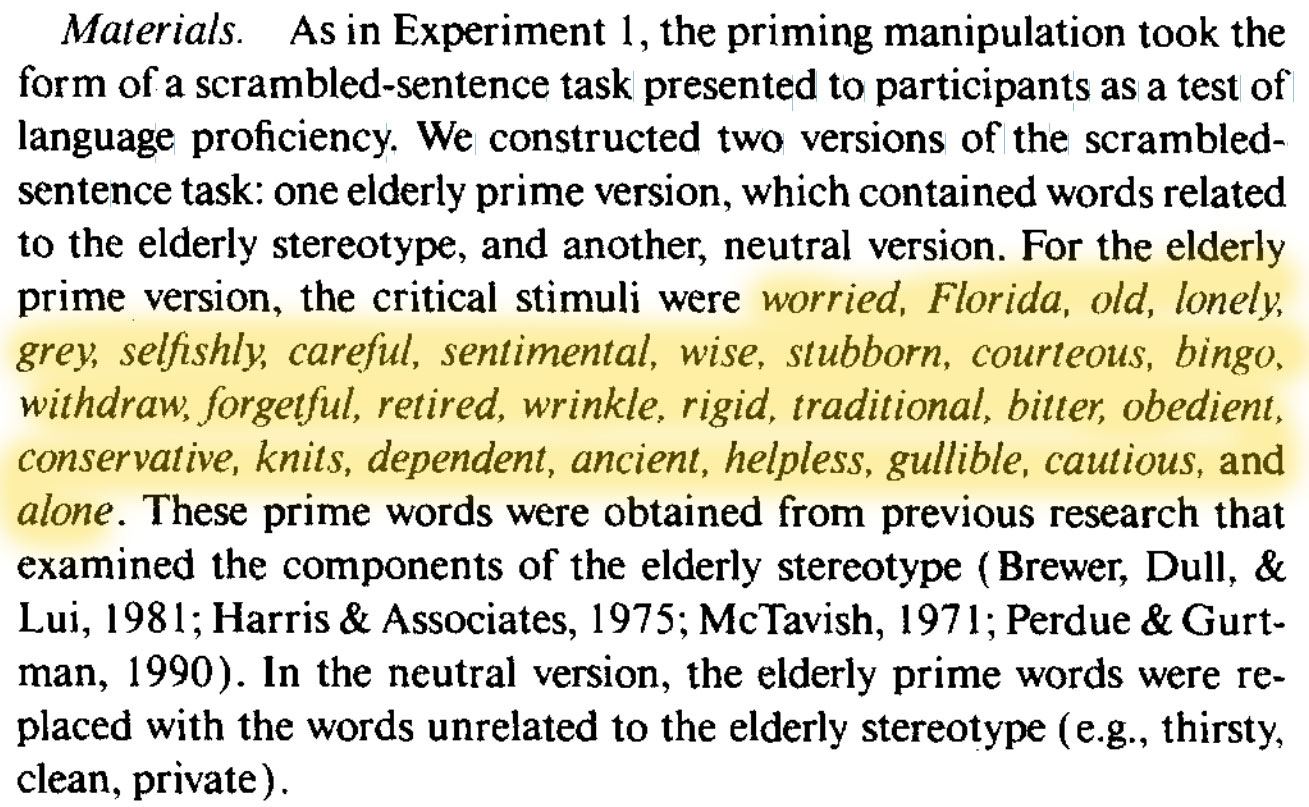
Social psychology studies how people and groups perceive others and influence and relate to them. These are complex phenomena to observe: reality isn’t reproducible in the laboratory, so scholars in this discipline have learned to use play scientifically, exploiting imagination and fiction. Otherwise, how valid can the results of someone aware of being under examination be?
The real purpose of Bargh and colleagues’ experiment was to measure the time participants walked down the hallway to the elevator after exiting the examination room. It turned out that all people exposed to the stereotype of old age walked slower. Scientists thus recorded the phenomenon of priming with direct effects on behavior.
priming is a more or less explicit stimulus that activates or modifies specific responses toward subsequent target stimuli (targets). Here’s one of the most trivial examples I’ve found browsing the web1.

What words came to your mind? RED and GREEN? Or GRAPE? And why not ROD, or GRACE, or GRASS?
The one above is an elementary and slightly drawn-out example of priming2. In this case, the prime stimulus is given by an image, while the targets are words. Still, there are many different types of priming, as many as our sensory channels. Sound and smell can be priming stimuli. Priming can be perceptible or subliminal.
Priming was a known phenomenon before 1996. But the noticeable effect on behavior was the most striking in this experiment. A handful of words were enough to change the gait of a group of people. From there on, experiments of this kind multiplied. Some reviewed and limited the observed results, while others explored their practical applications. Is there a prime stimulus X that can drive the sale of product Y?3
Some modern-day marketing strategies exploit this phenomenon. This topic has great interest, even given the number of articles, posts, and books ranging from neuro-marketing to neuro-branding.
Let me digress briefly on this. There’s a lot of enthusiasm around these phenomena applied to marketing and sales. A little too much, in my opinion. Priming and all the other psychological mechanisms with apparent effects on everyday life are fascinating. Those who know and use them well seem to possess some superpowers to read and manipulate people. It’s not that simple.

I can’t deny the validity of the studies and the observed phenomena. Still, remember that most psychological experiments, to have sufficient scientific truth, are extreme simplifications, laboratory simulations of (somewhat) real situations.
«Finally, priming alone was not sufficient to promote a priming effect on walking speed comparable to Bargh et al’s. We also had to manipulate experimenters’ beliefs so that they would expect the primed subjects to walk slower. This finding is congruent with recent evidence showing that primed behavior is sensitive to the context in which it takes place [...]. Experimenters’ expectations seem to provide a favorable context to the behavioral expression of the prime. Obviously, this interpretation remains tentative, as we do not know how this process operates. However, it is likely that experimenters who expect their participants to walk slower behave differently than those who expect their participants to walk faster and that such behavioral cues are picked up by participants». Stéphane Doyen, Olivier Klein, Cora-Lise Pichon, Axel Cleeremans, Behavioral Priming: It’s All in the Mind, but Whose Mind? PLoS One, Jan. 18, 2012.4
Long story short, the laboratory experience doesn’t coincide with real life.
Returning to the topic of prime and behavior: the chain of persuasion, the “steps” that lead a person from a first impression to enacting a behavior, is composed of several units linked to many other factors, all of which must occur with a high probability. The downward fluctuation of any of these elements collapses the likelihood of the behavior5. I mean: we are much more complex than this.

Most of the information we take in is visual: photographs can be very powerful primes. Every time we see an image, it activates in our brains other images, meanings, and stimuli in some way related to it. Patterns in memory from neural structures, experience, and expectations, which try to anticipate or complement the stimuli that will come later, discarding what has nothing to do with it. These automatic evaluations precede detailed and conscious processing; they have nothing to do with cognition; it is affective priming.
Within photographic projects and series, many different images coexist, but they talk to each other. And this also happens when you combine pictures with other materials, illustrations, documents, and texts.

From the point of view of priming, each image triggers a specific state toward another, and so on. The following image (the target) can be part of the mental pattern that has been activated and be understood more quickly so that it is more fluid and natural.
When, on the other hand, we find a target that is inconsistent with the prime we received, we take longer to recognize it. This creates a pause, an interruption in the flow of information. It forces the mind to stop and make a cognitive effort to understand what is in front of it, to retrieve data in memory that it had not considered, and to activate or build new patterns.
To complicate things, we can add other components to the game. It is not only the content of the photographs that works as a prime. Different dimensions may be considered: the format, the medium, the type of paper, the context, and so on.

Images change meaning based on all these factors. As the levels of activation of neural pathways change, so do we.
«One cannot descend twice into the same river and touch a deadly substance twice in the same state, but because of the impetuosity and speed of change it disperses and gathers, comes and goes». Heraclitus, On Nature. 91, Diels-Kranz.
Some images appeal greatly to some people, while others do not, perhaps partly because they do not activate any pattern in the observer.
Primes and these activation levels also affect us when we photograph, not just when we observe or are exposed to stimuli. After all, what is photographing if not responding to a stimulus outside of us?
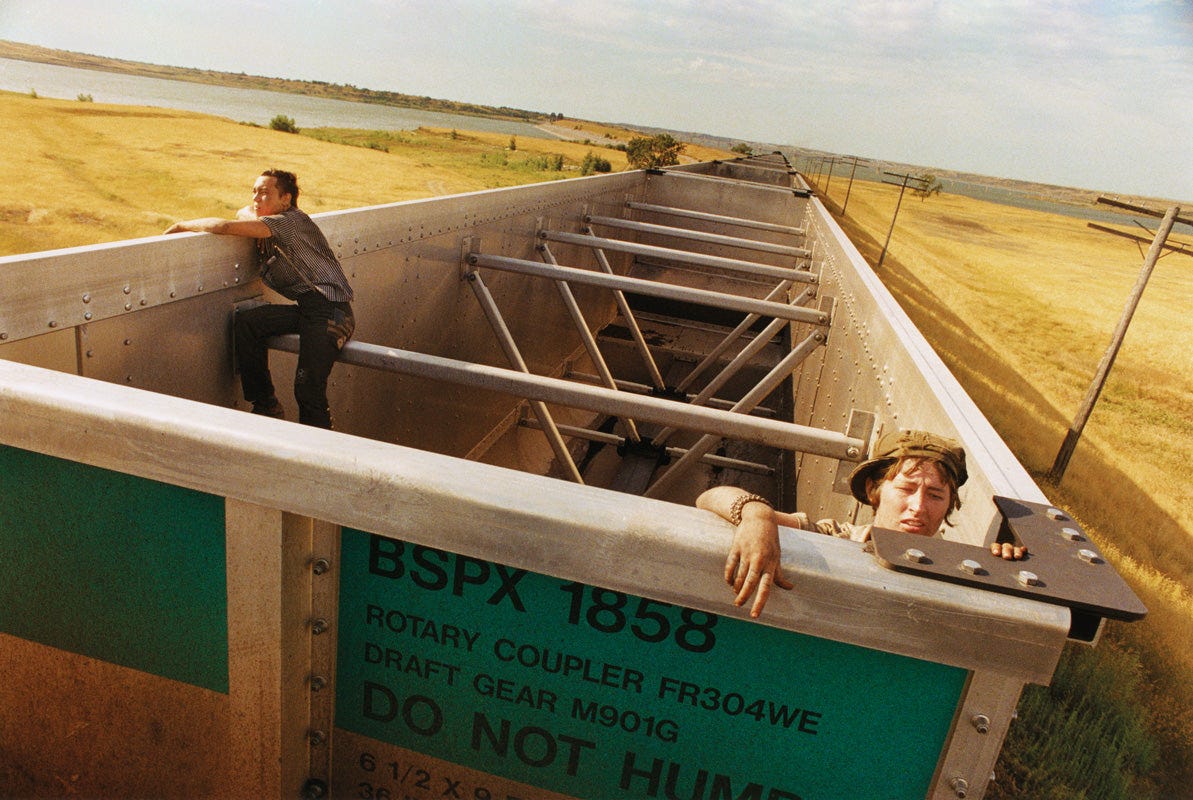
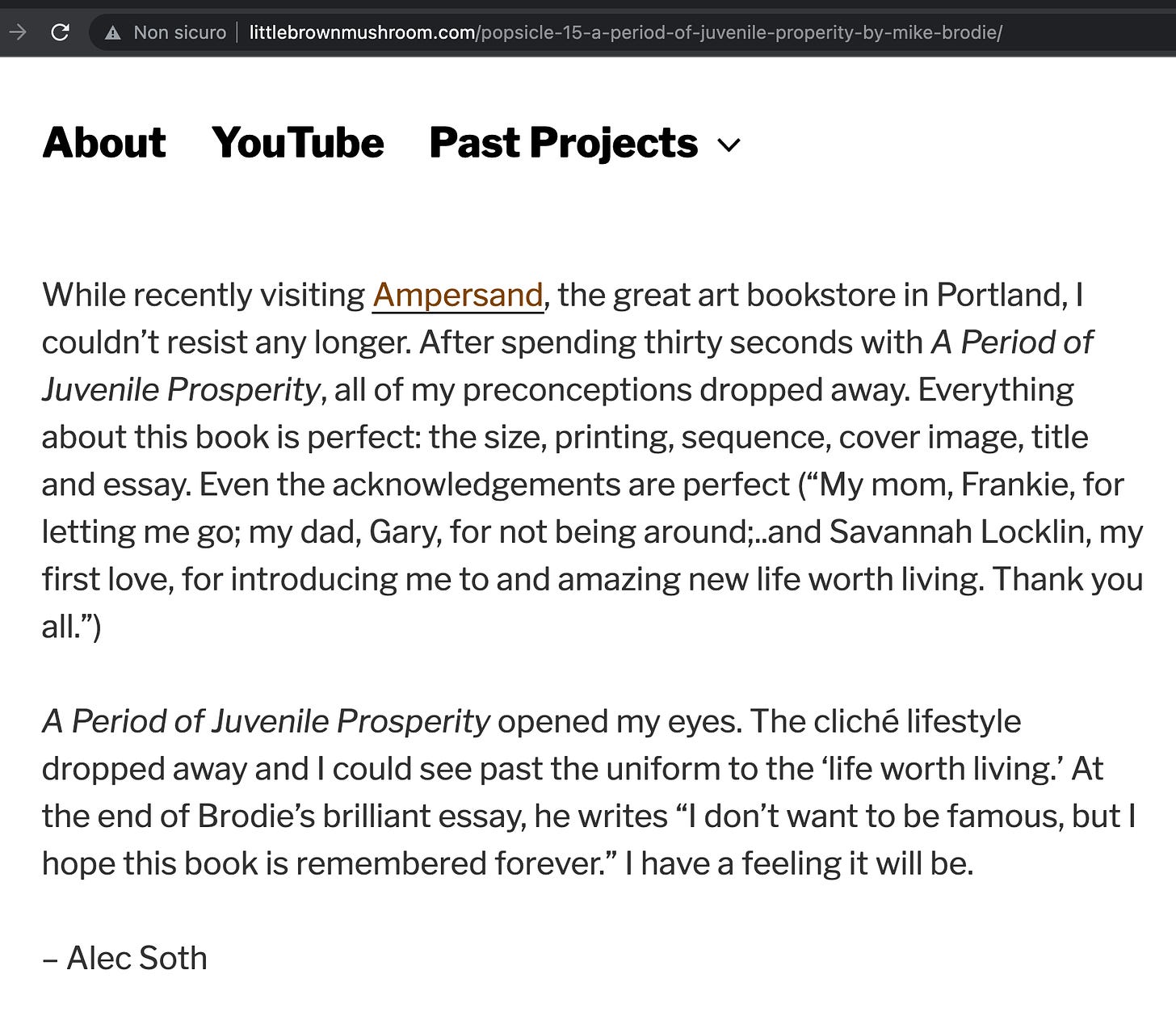
In article #EN1.2, A mind full of schemas, we talked about patterns, the knowledge structures that (somehow) guide how we photograph and look for new images.
We are everything we have experienced and come into contact with. But this everything isn’t active all the time and all at once. We have powerful but limited resources, and having everything always available would be very inconvenient.

When what we need is at hand, we save time and energy. And everything we use most frequently remains accessible. It works for household objects and is the same for our mental patterns. Those that are activated most often stay on the surface and have more occasion to be triggered by external stimuli. Anything that is not periodically recalled discharges, slowly ending up below the threshold of consciousness.
Explicit, dramatic photographs showing sensitive content can trigger powerful emotional reactions. And by powerful images, I don’t just mean overt and blatant or explicit. Powerful because they can keep stressful patterns active and charged, quickly pulling them up toward the threshold of consciousness.
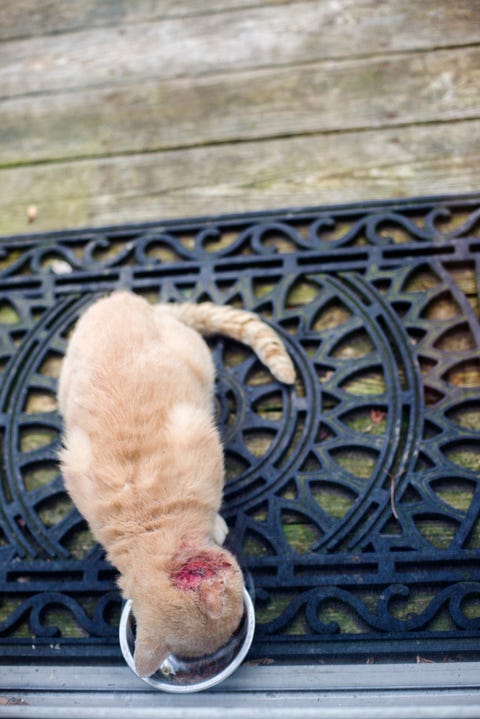
Usually, the mind has all the right tools to balance stress and a possible threat to mental health, responding to those stimuli that can trigger harmful reactions.
A professor of mine used to warn all students before exposing them to images, texts, or stories that might generate negative emotions. He did this every time, even when it involved weak stimuli, such as a photograph of a crying baby. Excessive regard from a senior teacher, a bit too polite, perhaps. We come into contact with images of pain and violence daily, even without intention. Are we too exposed and desensitized?
«The image as shock and the image as cliché are two aspects of the same presence [...]. Conscripted as part of journalism, images were expected to arrest attention, startle, surprise. As the old advertising slogan of Paris Match, founded in 1949, had it: “The weight of words, the shock of photos”. The hunt for more dramatic (as they’re often described) images drives the photographic enterprise, and is part of the normality of a culture in which shock has become a leading stimulus of consumption and source of value [...]. How else to get attention for one's product or one’s art? How else to make a dent when there is incessant exposure to images, and overexposure to a handful of images seen again and again? The image as shock and the image as cliché are two aspects of the same presence». Susan Sontag, Regarding The Pain of Others. Penguin, 2004.
One day someone pointed out to the professor how accustomed we were to witnessing even gory events through media and that his thoughtfulness was unnecessary. The professor replied that he knew many people could healthily handle that information. He was not doing it for them. His job was to warn those who were most vulnerable at that time because, for one reason or another, they didn’t have the tools to process a certain kind of information without suffering harm.
Our culture gives us insufficient tools to process grief. It is often taboo, words are insufficient, and narratives fail to deal with suffering.
«I wanted to write about pain without any philosophy. I wanted to describe an education in pain and that education’s political uses. But in literature, pain mostly excludes literature. And in the available politics, pain is often just what moves us to plead for its end.
True/False:In philosophy, pain is a feather plucked from its bird.In literature, pain is an index separated from its book.In movies, pain is a tree, but never its ax.
There’s a rumor that any consideration of pain nests under phenomenology, but phenomenology mostly stops at a modest sliver of available pain and declares it a universal whole.
[…]
A widely held notion about pain seems to be that it “destroys language.”6 But pain doesn’t destroy language: it changes it. What is difficult is not impossible. That English lacks an adequate lexicon for all that hurts doesn’t mean it always will, just that the poets and marketplaces that have invented our dictionaries have not—when it comes to suffering—done the necessary work». Anne Boyer, The Undying. Farrar, Straus and Giroux, 2020, Kindle Edition.
Images are emotional accelerators; photographs are capable of triggering powerful reactions. When used as a tool for self-exploration, photography can help you see your own story from the outside, build your own narrative, and affirm and reinforce yourself. But there are instances when it can lead astray and create damage.
Photographs are very sensitive accelerators. Some therapists or counselors encourage venting repressed emotions or traumas by manifesting them openly. There are many techniques that
«[...] draw on “the hydraulic model”, according to which the accumulation of energy [...], much like water blocked by a dam, eventually finds an outlet». David G. Myers, Jean M. Twenge, Elena Marta and Maura Pozzi, Psicologia Sociale (Social Psychology). McGraw Hill Education, 3rd edition 2017.
The concept of catharsis is attributed to Aristotle, who argued that emotions could be purified. The spectator who watched ancient Greek tragedies experienced a liberating mechanism, catharsis precisely, which released feelings of pity and fear.
«The cathartic hypothesis has been extended to include emotional liberation obtained theoretically not only from observing events in the dramas but also through remembering and reliving past events, expressing emotions and performing actions». David G. Myers, Jean M. Twenge, Elena Marta and Maura Pozzi, Psicologia Sociale (Social Psychology). McGraw Hill Education, 3rd edition 2017.
Many social psychologists argue that witnessing or participating in intense events produces no cathartic effect. This idea of a hydraulic system whereby strong, negative emotions must be released and, once allowed to vent, return to equilibrium is exaggerated.
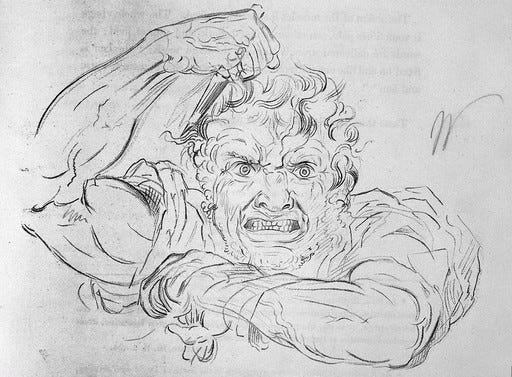
Recalling a problematic experience or trauma to reframe it can be, in many cases, a delicate and complex operation. Bringing it back to light isn’t the same as resolving it. Expressing negative feelings can fuel further equivalent attitudes. When this type of event returns to the surface, it remains active. It reinforces itself, recurring, even in implicit forms that are difficult to understand, except with the help of a (specifically trained and experienced) professional.
«Psychologists study phenomena, but “after all!” those they observe are human beings. People who are happy and unhappy, men who commit suicide and children who play, disappointed people who fall into depression, people who strive for high and difficult ends, dream, plan, commit crimes, and so on. People who need guidance, help, and care. What benefit can these people derive from calculating, measuring, and classifying their sufferings? Little. What needs to be done is to look behind the façade of events, to go below the surface by trying to work out a descriptive methodology that allows us empirical analysis without stopping at pure speculation». Kurt Lewin rquoted by Piero Amerio in David G. Myers, Jean M. Twenge, Elena Marta and Maura Pozzi, Psicologia Sociale (Social Psychology). McGraw Hill Education, 3rd edition 2017.
I realize this article has veered into the psychological. But there is a reason I’ve taken some space to talk about it in a newsletter entitled Making Pictures.
I’ve often felt lost in approaching personal issues related to individual emotions and stories through photography. It’s a complex, painful process full of pitfalls that never led me to true relief. It’s a method that doesn’t work for me, and I wouldn’t force it on anyone in front of my camera. I’m learning not even to do that with myself.
I also don’t believe that there is one “method” that suits everyone. There are many attempts to trace one’s own path. Some work at certain times and others fail.
To me, the heart of the whole photographic process is the human being. My biggest goal as a photographer is to build a healthy practice that allows me to photograph and work well for as long as possible. To keep my spirit calm, my thinking strong, and my body in good condition, just as I make sure my equipment is clean and fully functional.
And here’s someone who writes about Priming definitely better than me.
This is a somewhat distorted demonstration because the image is not the only prime. The letters provide a hint too. In addition, I believe that the words RED and GRAPE are used more frequently than ROD and GRACE.
Here’s another short interesting text on Priming.
Here’s the full article.
According to McGuire’s Information-Processing Model, persuasion consists of six stages: exposure, attention, comprehension, yielding, retention, and behavior. The probability of achieving the desired behavior is given by the joint probability of each stage.
Elaine Scarry, The Body in Pain. The Making and Unmaking of the World. Oxford Press, 1988.



